COASTAL REGULATION ZONES
A Brief Info
 India is considered to be on the most mesmeric countries on plant Earth. The country of 1.2 billion people (the second largest population in the world after China) boasts of so many attractions, both natural and man made. The Taj Mahal, one of the seven wonders of the world, is situated in Northern India.
India is considered to be on the most mesmeric countries on plant Earth. The country of 1.2 billion people (the second largest population in the world after China) boasts of so many attractions, both natural and man made. The Taj Mahal, one of the seven wonders of the world, is situated in Northern India.
In terms of natural wonders, India is always referred to as a continent of it’s own. The cold and snowy weather occupies the northern states of Jammu and Kashmir and Himachal Pradesh and the arid hot weather is present across the north western states of Punjab, Rajasthan and Gujarat. Rains shower across the north eastern states and the southern states enjoy round the clock pleasant weather, thanks in no part to their close proximity to the Arabian Sea, Indian Ocean and Bay of Bengal respectively.
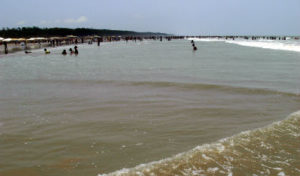 With time, however, increasing population, over reliance on natural resources and dumping of human- generated waste onto the sea endangered the coastal regions and the life living inside them and around them. In lieu of this impending danger, the Indian government, under the Environment Protection Act, 1986ˆ, issued a notification in February 1991. This notification called on for the regulation of activities in the coastal area by the Ministry of Environment and Forests (MoEF). In other words, it’s also referred to as the Coastal Regulation Zone (CRZ).
With time, however, increasing population, over reliance on natural resources and dumping of human- generated waste onto the sea endangered the coastal regions and the life living inside them and around them. In lieu of this impending danger, the Indian government, under the Environment Protection Act, 1986ˆ, issued a notification in February 1991. This notification called on for the regulation of activities in the coastal area by the Ministry of Environment and Forests (MoEF). In other words, it’s also referred to as the Coastal Regulation Zone (CRZ).
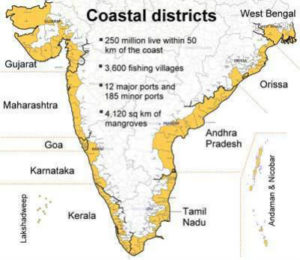 In January 2011, the Coastal Regulation Zone was notified for the main land, along with the Island Protection Zone (IPZ) notification, 2011 for Lakshadweep and Andaman and Nicobar Islands. It replaced CRZ of 1991, which was amended for 25 times and needed an update.
In January 2011, the Coastal Regulation Zone was notified for the main land, along with the Island Protection Zone (IPZ) notification, 2011 for Lakshadweep and Andaman and Nicobar Islands. It replaced CRZ of 1991, which was amended for 25 times and needed an update.
So what’s the whole fuss around Coastal Regulation Zone and why are they necessary to save the environment?
Q. What is the notification about?
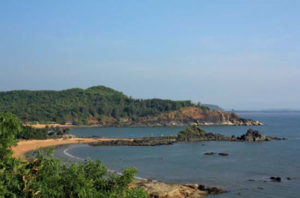 As per the notification, the coastal land up to 500m from the High Tide Line (HTL) and a stage of 100m along the banks of creeks, estuaries, backwater and river subject to tidal fluctuations, is called Coastal Regulation Zone.
As per the notification, the coastal land up to 500m from the High Tide Line (HTL) and a stage of 100m along the banks of creeks, estuaries, backwater and river subject to tidal fluctuations, is called Coastal Regulation Zone.
Q. What are the objectives of the notification?
It aims to-
-provide protection for the fisher folk communities.
-preserve coastal ecology and ecosystem.
-promote economic activity that have to be carried out in the coastal regions.
Q. What is CZMP?
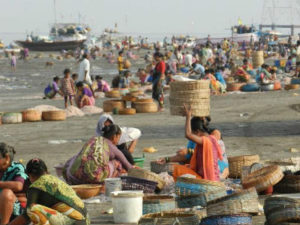 The CRZ 2011 notification enshrines the concept of a Coastal Zone Management Plan (CZMP). It is prepared with the fullest involvement and participation of the local communities.
The CRZ 2011 notification enshrines the concept of a Coastal Zone Management Plan (CZMP). It is prepared with the fullest involvement and participation of the local communities.
Q. What is the definition of No Development Zone?
The definition has been changed. It is reduced from 200 metres from the high tide line to 100 metres only. No commercial development can take place under the stipulated area.
Q. What is not allowed in the Coastal Zones?
-Mining of limestone and other similar minerals.
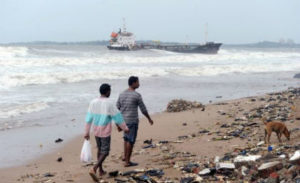 -Mining of sand, rocks and other substrata material including limestone except rare materials like monazite and rutile.
-Mining of sand, rocks and other substrata material including limestone except rare materials like monazite and rutile.
-Exploitation of oil and gas.
Q. What is the importance of the CRZ.
India has a long coastline of 7516 km, ranging from Gujarat to West Bengal and two island archipelagos. Our coastal ecosystems provide protection from natural disasters to the 250 million people thatreside in the coastal areas. They provide a source of primary livelihood to 7 million households, Our marine ecosystems are a treasure trove of biodiversity.
Thus, our coastline is both a precious natural resource and an integral economic asset, and the CRZ fulfills our need for a strong and progressive framework to regulate our coast.
Written by Sherwin D’cunha



Leave a Reply
Want to join the discussion?Feel free to contribute!